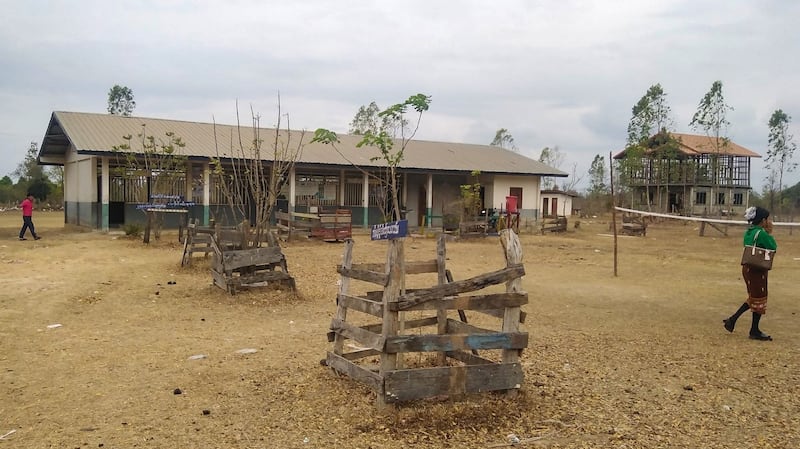UPDATED on at 5:51 P.M. EDT on 07-19-2022
A severe lack of teachers in Laos is forcing school districts to use volunteer staff, merge some schools and close others, a trend that lawmakers warn could cause future generations to lose access to education.
During the Lao National Assembly’s 5th ordinary session, from June 26 to July 18, lawmakers spent a lot of time discussing the teacher shortage.
Representing the southern province of Savannakhet, Xayxomseun Phothisan urged the assembly to hire more state employees and approve budgets to pay teacher salaries so that each school would have the adequate number of faculty needed to function.
“If the government does not have any solution to this urgent problem, more schools in many provinces will be closed and students will lose access to education,” she said.

This year, the government is allowing recruitment of 285 new teachers nationwide, down from the 340 it hired last year. The downward trend in teacher hiring began in 2017, when the state employee quotas were reduced each year due to limited budget. According to UNESCO, spending on education as a proportion of GDP shrunk from 3.2 pct in 2013, to 1.9 pct in 2021.
School closures
Savannakhet province has only 223 teachers on its payroll for the entire province. More than 430,000 people in Savannakhet are aged 19 or younger, though not everyone in that demographic goes to school.
Though the province ranks first in the nation for school attendance between the ages 6-11, only 68.7% of Savannakhet children between the ages of 6-8 are attending school. For ages 9-11, the percentage rises to 85.2%.
There are also 21 schools in the province that are staffed by unpaid volunteers, many of whom quit when they learned, sometimes after eight years of working, that they would not be able to transition into paid roles.
Because of the teacher shortage, the province is expected to close 25 schools.
The Lao government has approved the province hiring 47 new teachers, but spread over 15 educational districts, it means only three new teachers per district, nowhere near enough to serve the student population.
Most of the schools experiencing teacher shortages were primary schools in rural areas, because teachers have little desire to work there, representatives of Savannakhet province’s Department of Education and Sport told RFA’s Lao Service.
The capital Vientiane also faces a teacher shortage, with 900 on payroll – far short of what it needs. There are around 300,000 youth aged 19 or younger in Vientiane, yet the central government will allow hiring only 16 new teachers. The capital is expected to close seven schools.
“The lack of teachers is widespread,” an official from Vientiane’s Department of Education and Sport told RFA. “We need over 900 teachers in order to meet our plan. …The only thing we can do is to inform students to go to schools in other villages and dissolve the small schools, where there are no teachers.”
The official said that Vientiane had already merged seven schools since 2021 including three last year as the teacher supply dwindles.
Aging teachers
In Luang Prabang province’s XiengNgeun district, volunteer teachers are quitting in large numbers, an education official said.

“We need about 100 more teachers for primary and secondary schools,” the official said. “The quality of our education in the district, according to the national indicators, may not meet the plan.”
He said that many of the paid teachers are old and close to retirement, and some of them face health problems. However, development of younger teachers to replace them is lagging.
Though the district has not seen a school closure yet, when the old teachers retire the problem will get worse, he said.
“The quota from the central government to the province to recruit new state employees has been reduced,” the district official said. “We only received permission to hire 10 new teachers this year. … For primary schools in the city areas, we have a solution by assigning one teacher to teach in 2 or 3 schools. But in the rural areas, that kind of thing is very hard to do.”
Translated by Phouvong. Edited by Eugene Whong and Malcolm Foster.
Update corrects the youth population of Vientiane and adds data from UNESCO.
